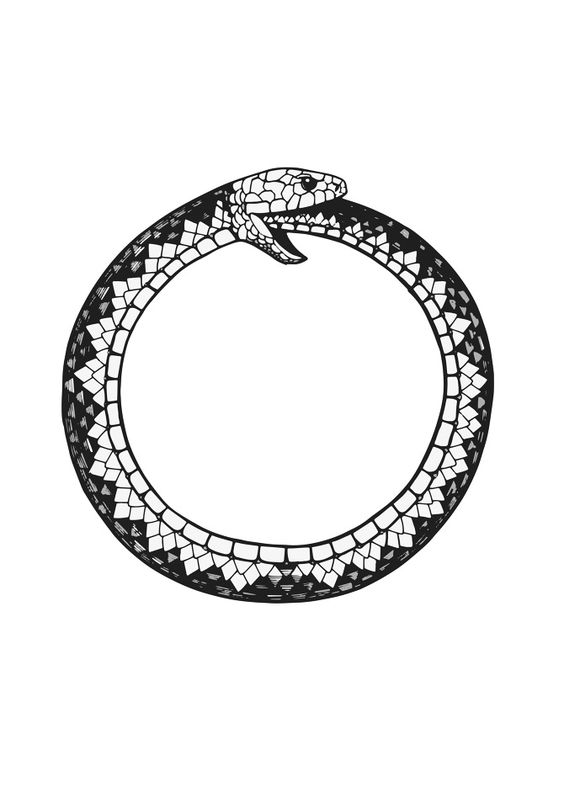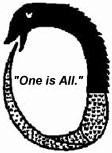
 |
Symbol namn : | Ouroboros |
|---|---|---|
| Other names : | Uroborus | |
| Symbol type : | Symbols | |
Ouroboros (uroboros) Ancient symbol of a Serpent biting its tail, forming a circle. The name ouroboros comes from the Greek terms oura, meaning “tail,” and boros, meaning “devourer.” The “tail-devourer” represents the eternal cycle of birth, death, and rebirth. The origins of this symbol extend as far back as 4700 BC and is one of the oldest mystical symbols in the world. It is a symbol which is used in alchemy, magi and is used all around the world in mythologies and secret societies.
The ouroboros has several meanings interwoven into it. The serpent biting, devouring, or eating its own tail is symbolizing the cyclic Nature of the Universe: creation out of destruction, Life out of Death. The ouroboros eats its own tail to sustain its life, in an eternal cycle of renewal.
God is a circle, the center of which is everywhere and the circumference nowhere.
It also represents time, from the beginning or creation to our time.
In alchemy, it represents the spirit of Mercury symbolizes continuous renewal.
In mythology, the Oroborus is a symbol representing the Milky Way galaxy. Myth refers to a serpent of light residing in the heavens. The Milky Way is this serpent, and viewed at galactic central point near Sagittarius, this serpent eats its own tail. Many ancients used the galaxy to calculate cosmic and earth cycles
Ouroboros appears in many mythologies:
The birth, death, and rebirth are found in Hinduism with the gods Brahma, Vishnu, Shiva and also Buddhism.
Serpent Jormungand of Norse legend, one of the three children of Loki and Angrboda, grew so large that it could encircle the world and grasp its tail in its teeth. It guarded the Tree of Life and is often depicted as an ouroboros.
The Aztec serpent God Queztacoatl was depicted similarly, and Chinese alchemical dragons have both similar shapes and meaning.
One of the oldest alchemical texts created in Hellenistic Egypt and included in the 11th-century Codex Marcianus, contains an image of the ouroboros. It symbolizes the underlying unity of the elusive Prima Materia, which exists in all matter and is simultaneously the beginning and goal of the Great Work. It is the Philosopher’s Stone, the vehicle for obtaining immortality, and it also represents the cyclical nature of the alchemical process, which is the union of the male and the female principles, their destruction, and their resurrection and reunification. The Codex Marcianus ouroboros is half black and half white, like the symbol for yin and yang in Taoism, thus depicting the sexual union of opposites that continually creates the world.
Later alchemical imagery shows the ouroboros as two serpents devouring each other’s tails, heightening the sexual symbolism. Another representation is two dragons fighting at each other’s throats.

In alchemy the fundamental message of the ouroboros is the changing of one thing into another, ultimately yielding “All is One.” It is a symbol for Mercurius and the union of opposites.
The Codex Marcianus ouroboros is half black and half white, like the symbol for yin and yang in Taoism, thus depicting the sexual union of opposites that continually creates the world.
